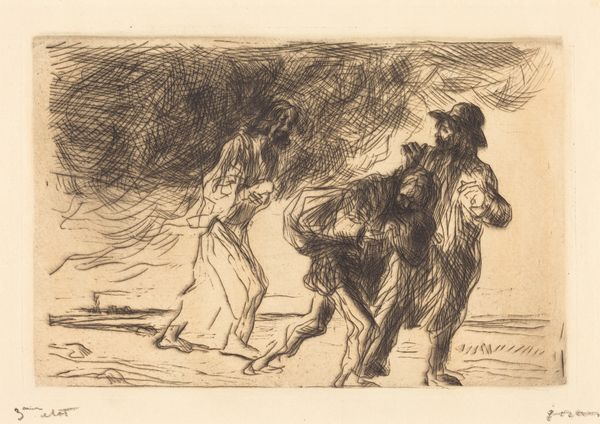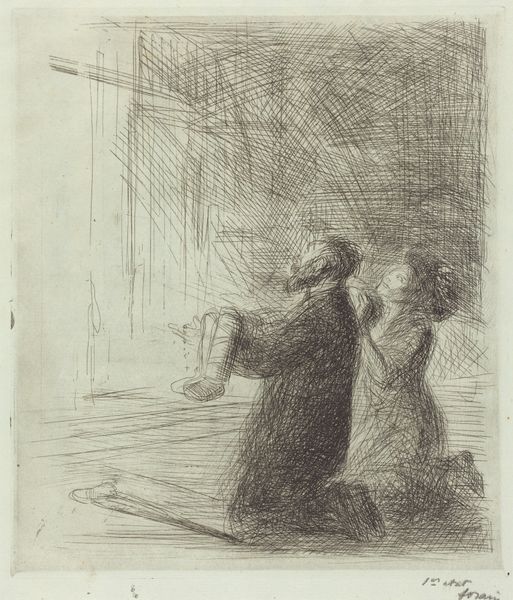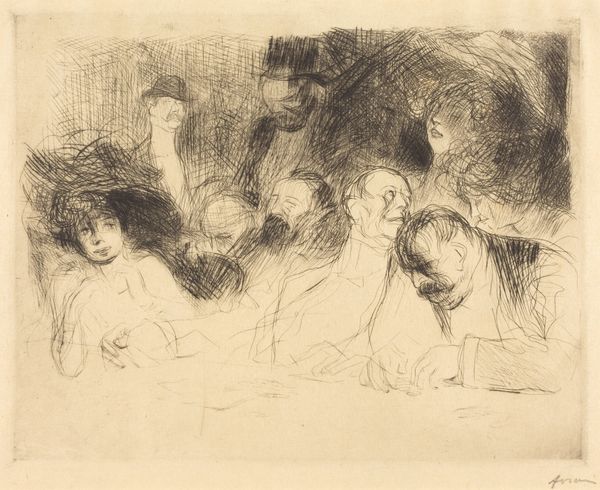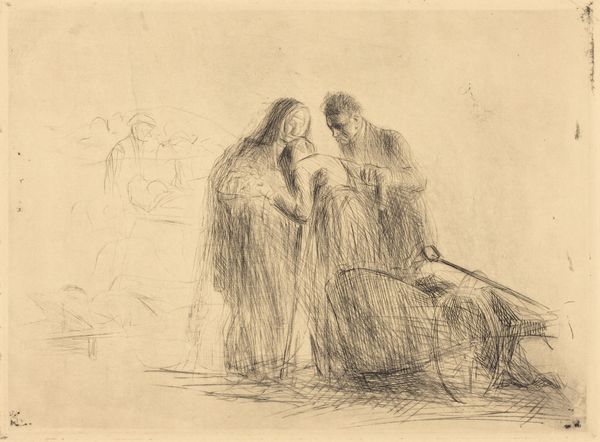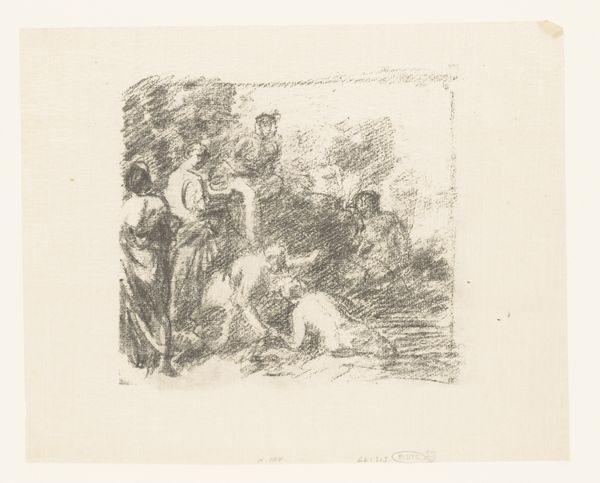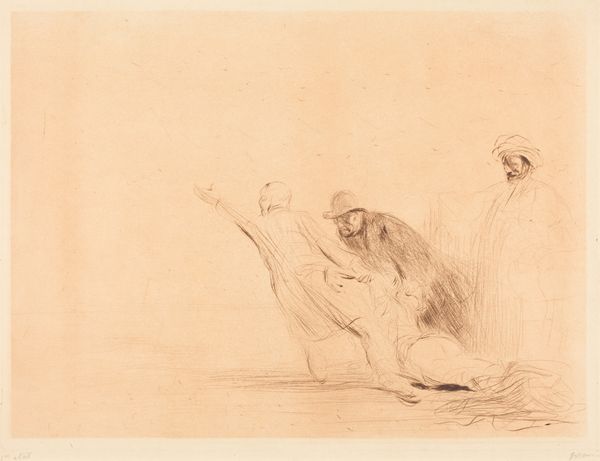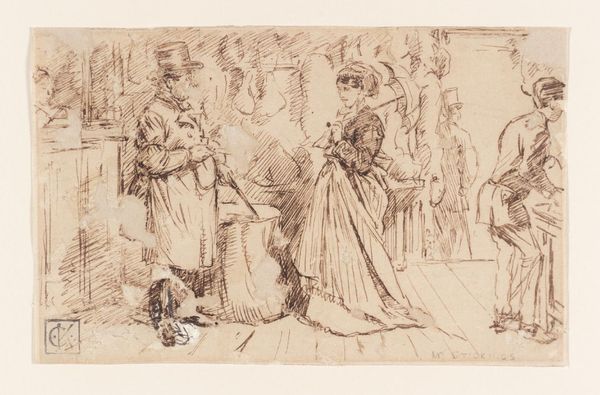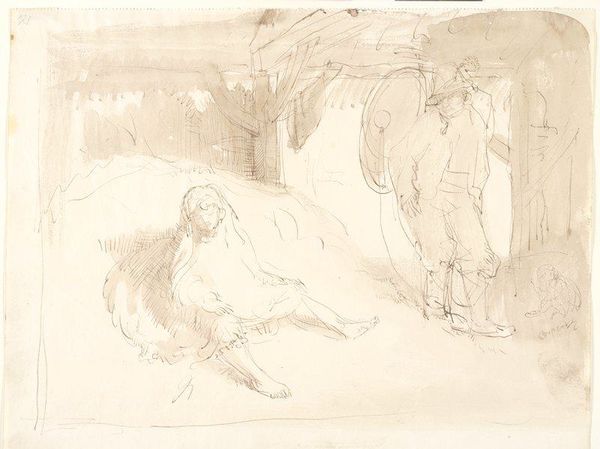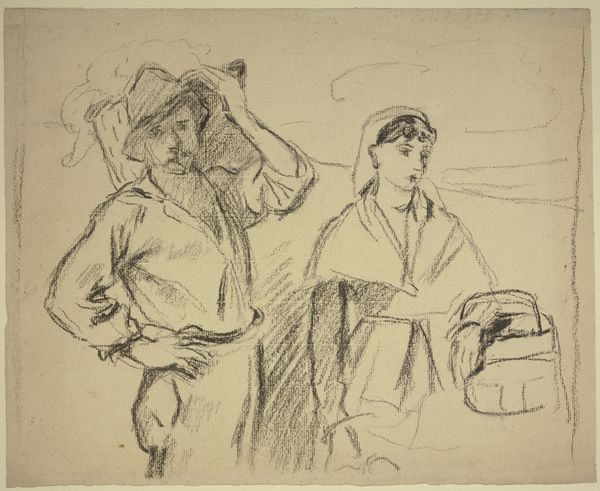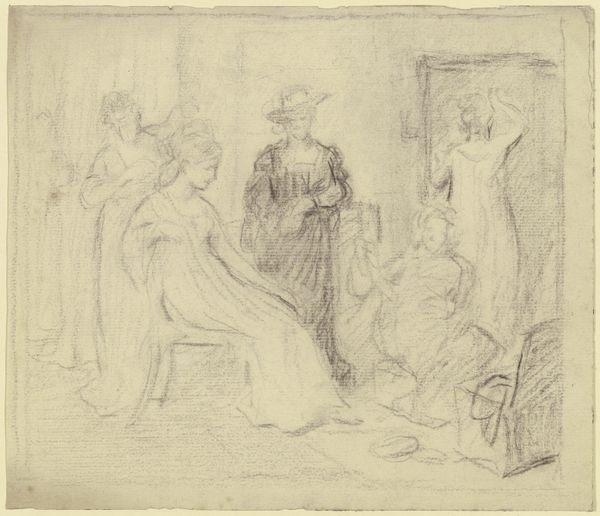
Copyright: National Gallery of Art: CC0 1.0
Curator: This etching, titled "Christ Stripped of His Clothes," was created by Jean-Louis Forain in 1909. The print depicts a particularly vulnerable moment in the Passion. Editor: There's a palpable sense of raw discomfort and injustice radiating from this work. The almost frantic lines accentuate Christ’s strained posture. What exactly does the process of etching allow here? Curator: The etching technique enables the creation of fine, detailed lines and tonal gradations, perfectly suited to capture the emotional weight of the subject. We witness not only physical exposure, but also the stripping away of dignity and power in a highly fraught moment. The act itself of making prints allows for this message to travel widely. Editor: Absolutely. It strikes me that the rough lines emphasize the immediate labor behind this cruelty. The guard appears less like a grand, evil instigator, and more like a worker performing a task. Is there a political message tied to class awareness within Forain’s choice to emphasize labor through his medium? Curator: Certainly. Forain often critiqued societal structures and power dynamics. Through its historical context and depiction of religious subjects, the work underscores universal themes of oppression and suffering. It draws attention to the inherent cruelty found in systems, even legal and religious ones. Editor: And is the theme here specific to the treatment of the poor? Curator: The vulnerability depicted transcends mere poverty. The act of stripping a person bare and humiliating them resonates with a broader historical understanding of abuses by institutions on all levels. Editor: The scale almost lends intimacy to such public brutality. Curator: Yes. It demands introspection and a deeper contemplation on what societal roles individuals accept. I am always reminded of the human element—who bears the cost of cruelty, and what do they create as a response? Editor: Forain’s use of print, in the context of his critical subjects and process-heavy presentation, brings history face-to-face with both maker and consumer in an intimate arena. Curator: Exactly, prompting reflection on themes relevant across diverse lived experiences and social hierarchies.
Comments
No comments
Be the first to comment and join the conversation on the ultimate creative platform.


